We might obtain a fee whenever you use our affiliate hyperlinks. Nonetheless, this doesn’t influence our suggestions.
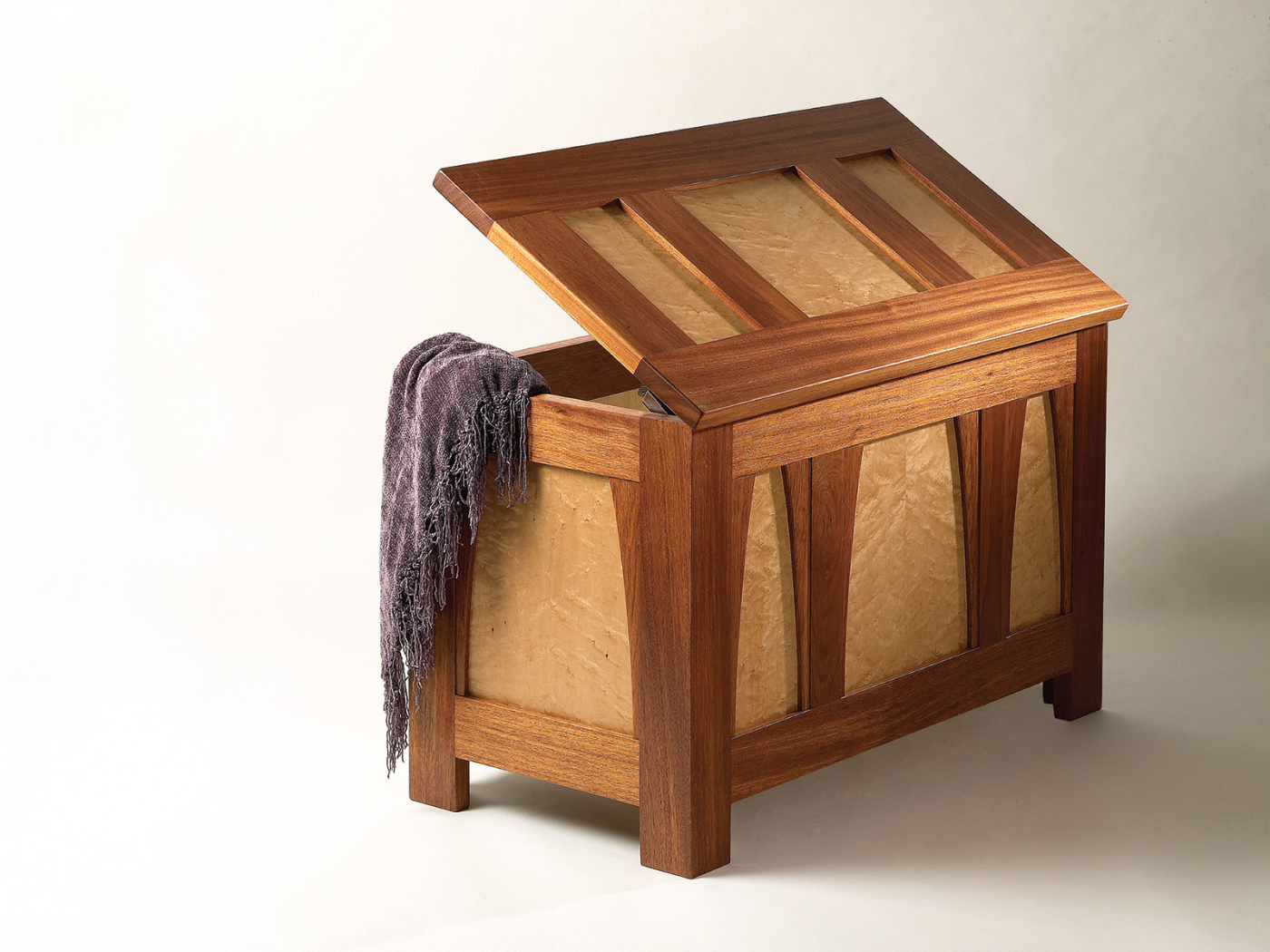 Contrasting woods spotlight the elegant traces of this Gustav Stickley-designed basic.
Contrasting woods spotlight the elegant traces of this Gustav Stickley-designed basic.
In days passed by, a chest much like this could comprise a bride’s dowry. The shape goes again to Gothic instances, however that is an adaptation of a Gustav Stickley piece from 1901. Admiring the traces of this piece, I used to be curious to see how the design would look with contrasting supplies, not the standard Craftsman darkish oak. The panels are quilted chook’s eye maple, and the opposite elements are Jatoba, also called Brazilian cherry.
The unique was made from quartersawn white oak with wrought-iron braces on the corners. What makes this uncommon for a Stickley design are the ornamental corbels on the panels. These additionally appeared on a number of eating room case items made within the early 1900s.
 Ornamental curved parts in Stickley furnishings are normally related to Harvey Ellis, who labored for Stickley in 1903. This design appeared properly earlier than Ellis labored for Stickley, and earlier than Stickley wrote in opposition to utilizing purely ornamental parts in his furnishings catalogs.
Ornamental curved parts in Stickley furnishings are normally related to Harvey Ellis, who labored for Stickley in 1903. This design appeared properly earlier than Ellis labored for Stickley, and earlier than Stickley wrote in opposition to utilizing purely ornamental parts in his furnishings catalogs.
Stickley doesn’t at all times get the credit score he deserves as a furnishings designer. Constructing this bridal chest with non-traditional supplies takes his design out of the Craftsman context, and reveals Stickley’s exceptional sense of line, proportion and texture.
In lots of the authentic bridal chests I’ve seen, the middle panels have cracked. I believe the corbels are the culprits, conserving the solid-wood panels from increasing and contracting within the grooves of the stiles. To keep away from this downside, I made a decision to make use of veneered panels. The veneer is on a core of 1⁄2“-thick Medium-density Fiberboard (MDF), and the backing veneer is sycamore, a less-expensive different to the figured faces.
The veneer on the broader middle and finish panels is bookmatched. I pressed the panels separately in a easy shop-made chilly press, and labored on the chest’s solid-wood elements whereas the glue on the panels was curing.
When you consider this chest as a easy field, a lot of the work is within the 5 paneled assemblies: the back and front, two ends and the highest. The panel assemblies are joined with mortises and tenons, and every of the 4 legs is basically two stiles with the lengthy edges mitered collectively.
I fabricated all the stiles and rails, after which dry-fit every of the panel assemblies earlier than chopping and assembling the miter joints that join the legs.
Arts & crafts bridal chest reduce listing and diagrams
Managing Bits and Items
This isn’t actually a tough venture to construct; the toughest half is conserving monitor of what piece goes the place. The utilized corbels make it crucial for the panel grooves to be off-center on the perimeters of the stiles and rails. As I reduce the elements I made a decision the place they’d go within the completed chest, and marked each with a lumber crayon. As I labored on the joints I paid shut consideration to which face of every half was the skin piece.
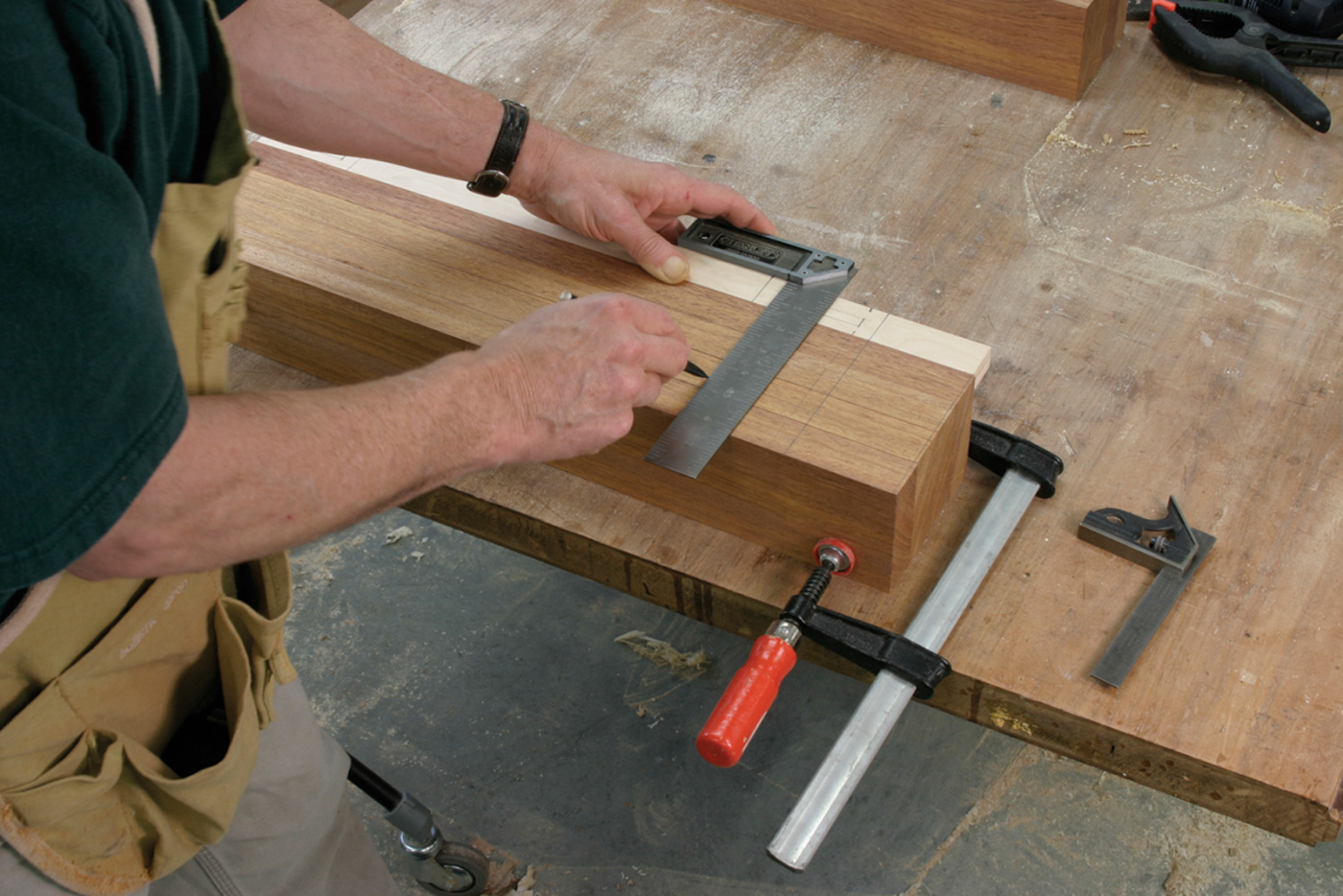
With the size marked on a narrative pole, the places for the mortises are marked on the legs as a gaggle.
After chopping the panel elements to dimension, I grouped 4 of the leg items collectively and marked them out as left-handed items, utilizing a narrative pole to switch the measurements. I then laid out the opposite 4 leg items as right-handed, marking the places of the grooves for the panels and the mortises that maintain the stiles and rails collectively.
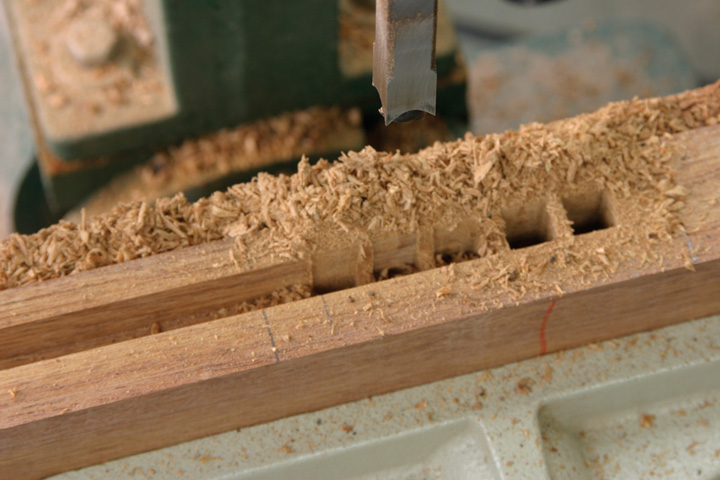
The mortiser is ready with the chisel flush with the panel groove. Plunge the bit and chisel to make distinct holes, then come again and clear up the waste in between.
The mortises are the identical width as, and in keeping with, the grooves that seize the panels. These 3⁄8“-wide grooves are set 1⁄2” again from the skin face of the stiles and rails, so I needed to be cautious to maintain all of the elements oriented appropriately as I milled the grooves.
I reduce the stopped grooves with a stack dado set on the desk noticed, fastidiously decreasing and elevating the legs on and off the cutters. As a result of the mortises fall within the ends of the grooves, the precise size of the grooves isn’t essential. The grooves within the rails and within the intermediate stiles run the total size of these elements. After milling all of the grooves, I started making mortises with my hollow-chisel mortiser, setting the gap from the fence to the chisel to match the situation of the groove.
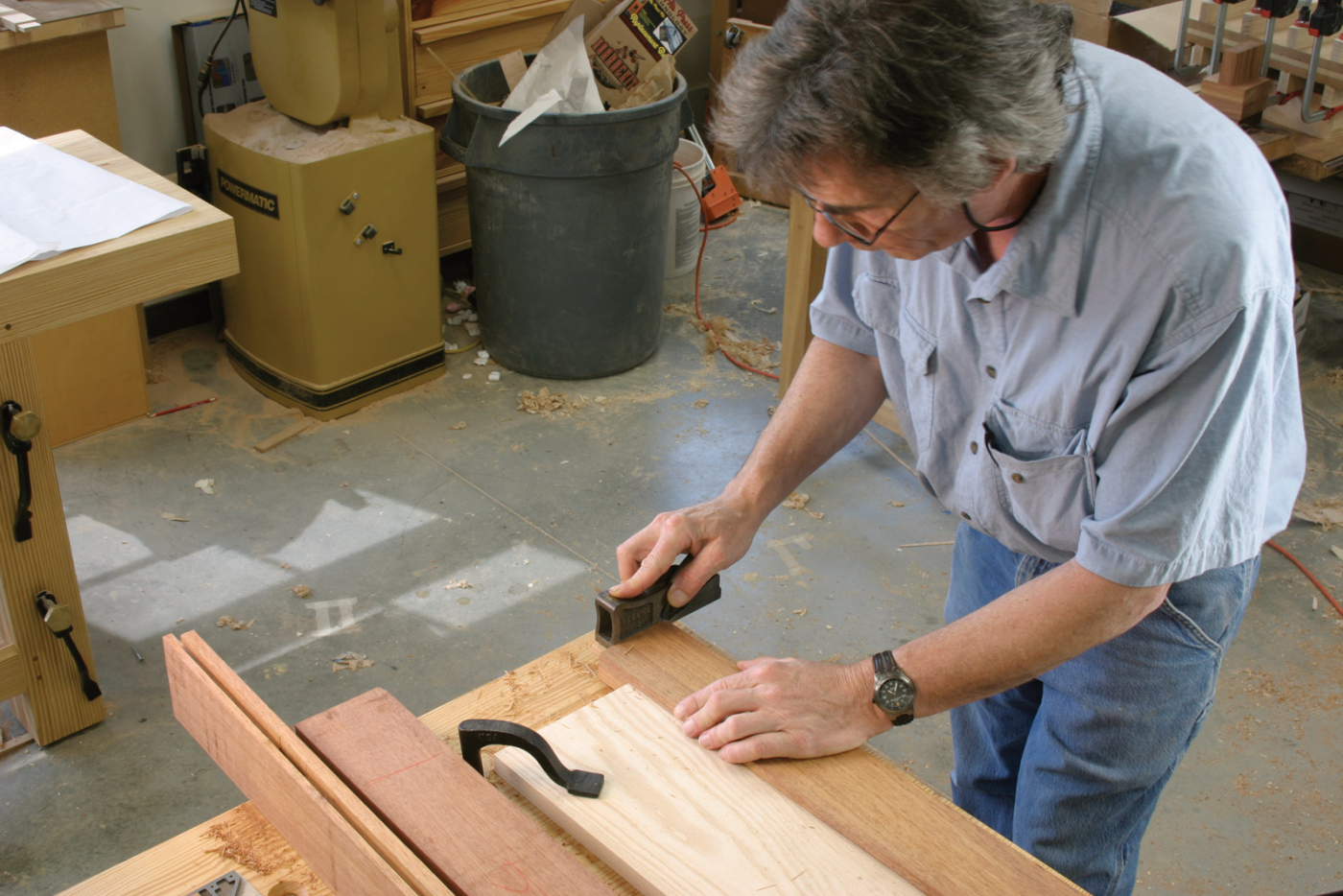
Every of the tenons is planed to suit snugly in its mortise. A batten throughout the bench eliminates the necessity to clamp the elements whereas becoming.
The tenons had been reduce with a stack dado set on the desk noticed, after which trimmed to a piston match with a shoulder airplane. With the person panels dry-assembled, I made certain that the faces of the joints had been flush with a number of swipes of my smoothing airplane.
Getting Able to Assemble
I reduce the veneered panels to their closing dimension, after which milled a rabbet on the again of every panel on the router desk. With a slot-cutting bit set just below 3⁄8” above the desk floor, I made a tongue that slipped within the grooves of the stiles and rails. It is a good approach when working with plywood panels of inconsistent thickness because the mounted distance between the desk and cutter will produce a constant half that matches the width of the groove. I then sanded the veneered panels to #220 grit to arrange issues for meeting.
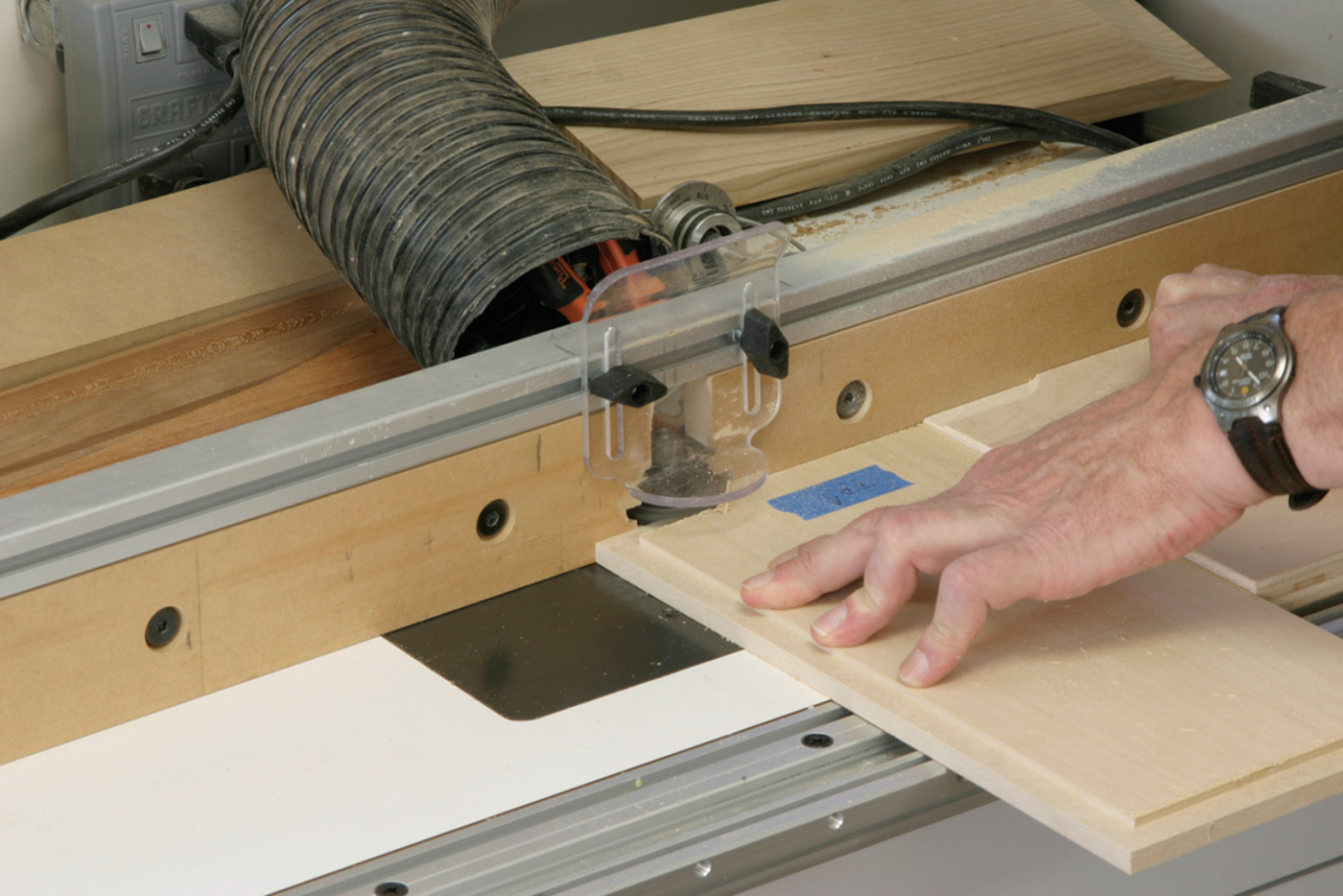
Setting the cutter above the desk floor cuts a constantly sized tongue on the again of the panels.
Earlier than assembling any of the panels, I reduce 45° bevels on the lengthy edge of every leg that didn’t have the groove for the panels. I glued pairs of legs collectively, clamping them with a mix of clear packing tape and clamps. After letting the glue on these joints dry in a single day, I glued collectively the front- and back-panel assemblies. The 2 end-panel assemblies are put collectively as your complete case is assembled.
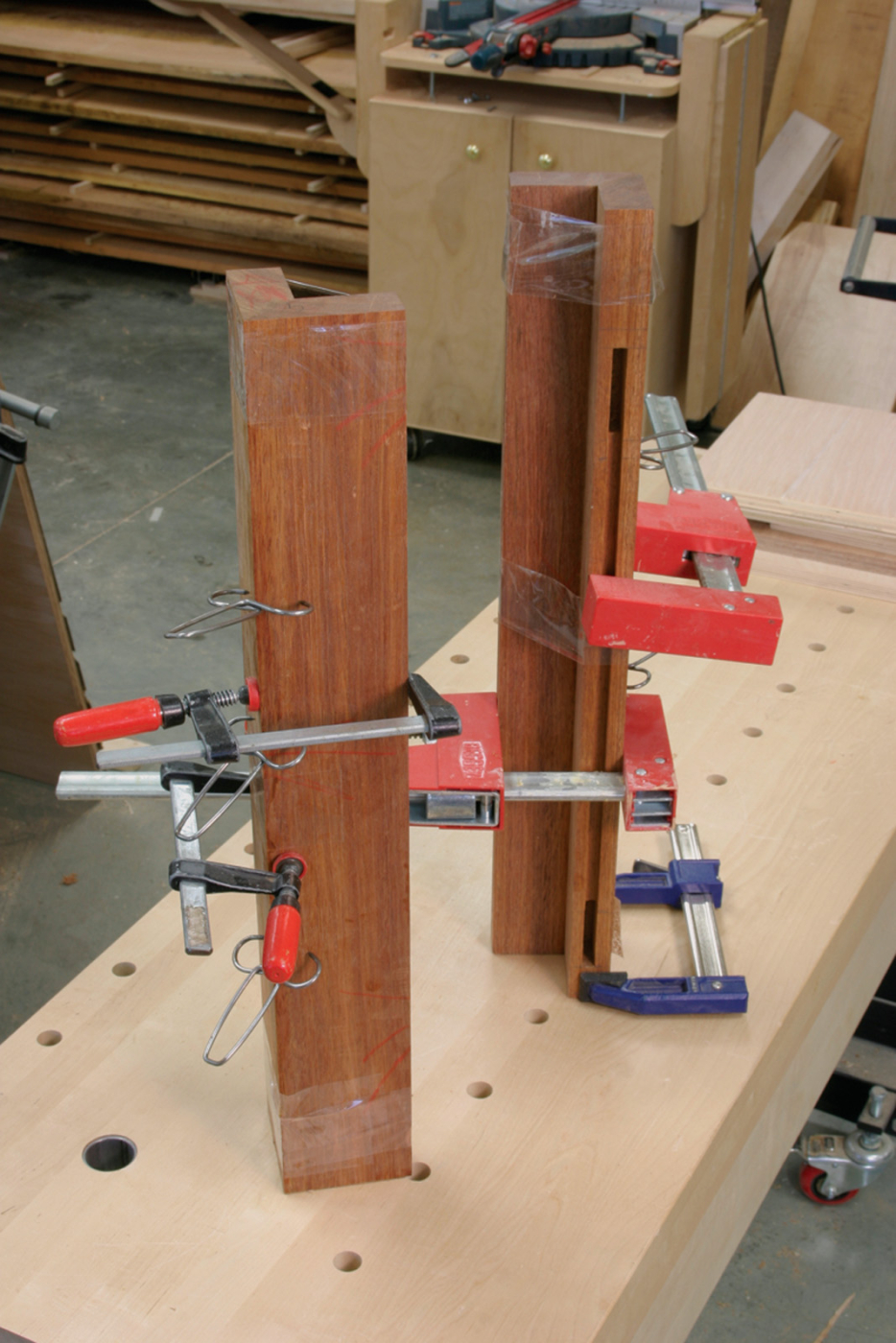
Strips of clear packing tape throughout the joint let the miters fold collectively. Extra tape and extra clamps present a decent, sturdy joint.
With the again panel mendacity face down on the bench, I assembled the rails and panels for the edges. As soon as they had been in place, I put glue on the tenons and dropped the entrance panel meeting in place. I then set the chest upright on my bench and clamped throughout the ends, checking for sq..
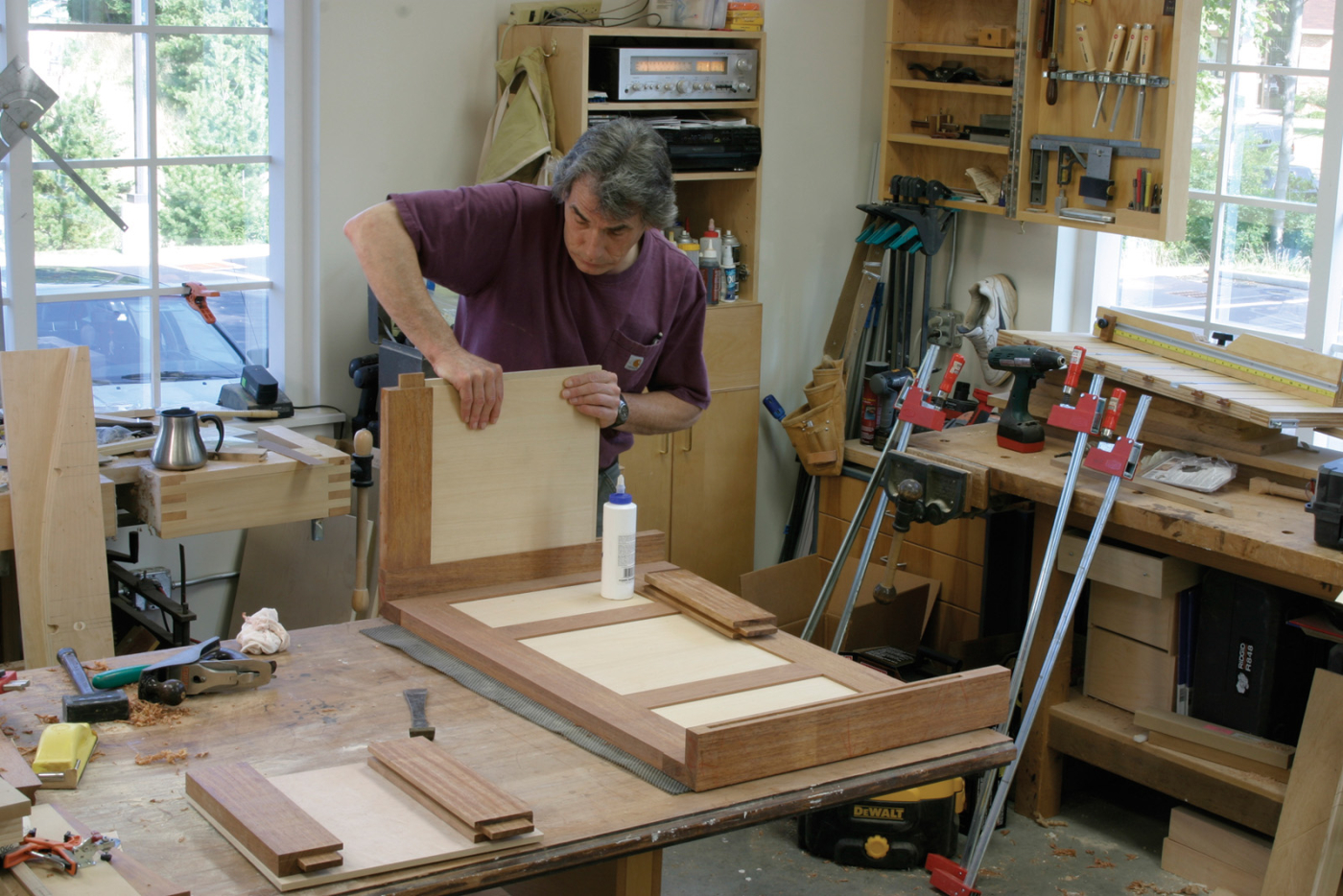
Rails and panels for the edges are slipped into the already-assembled again panel.
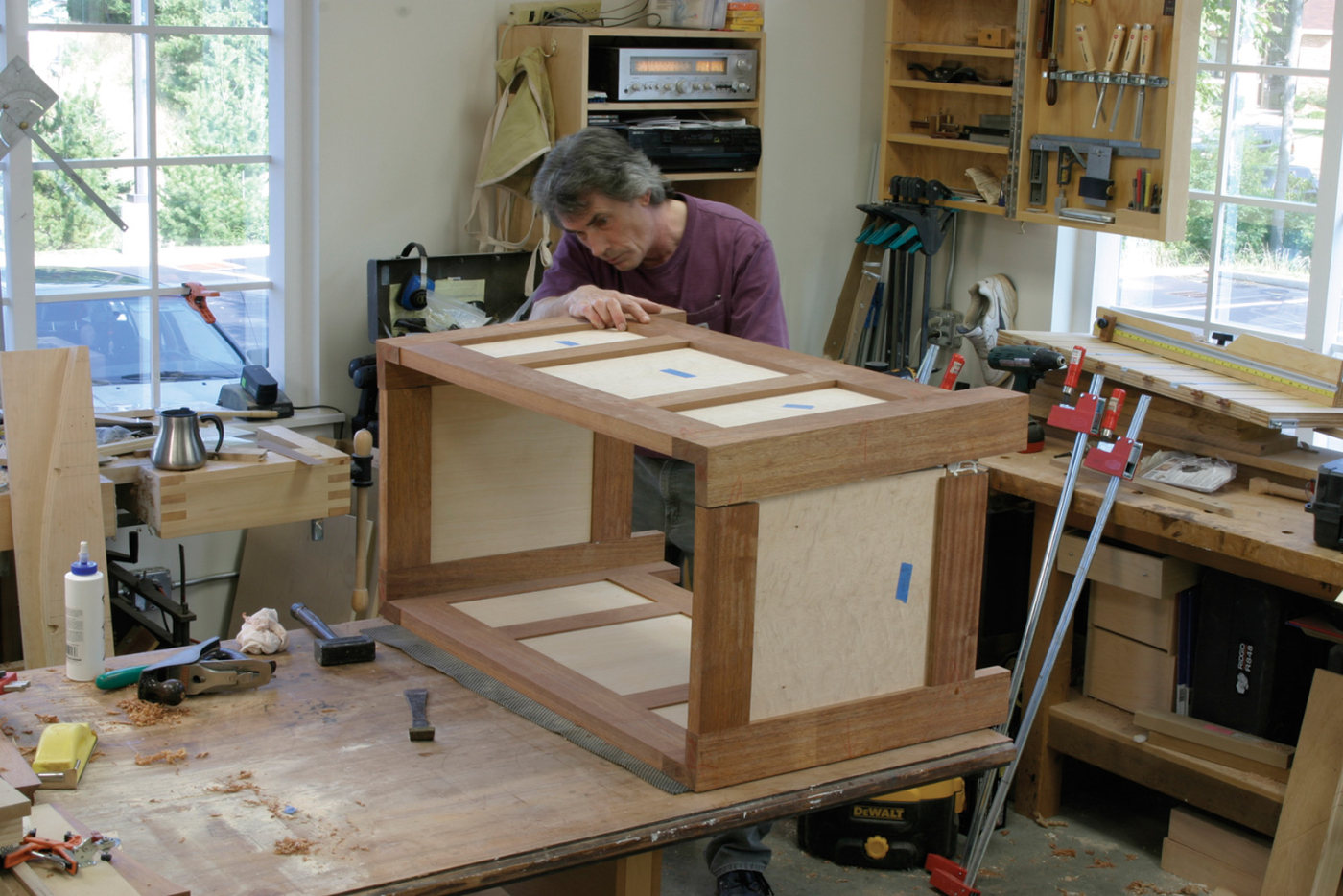
Assembling the back and front panels first simplifies the ultimate meeting – placing the edges collectively leads to a accomplished case.
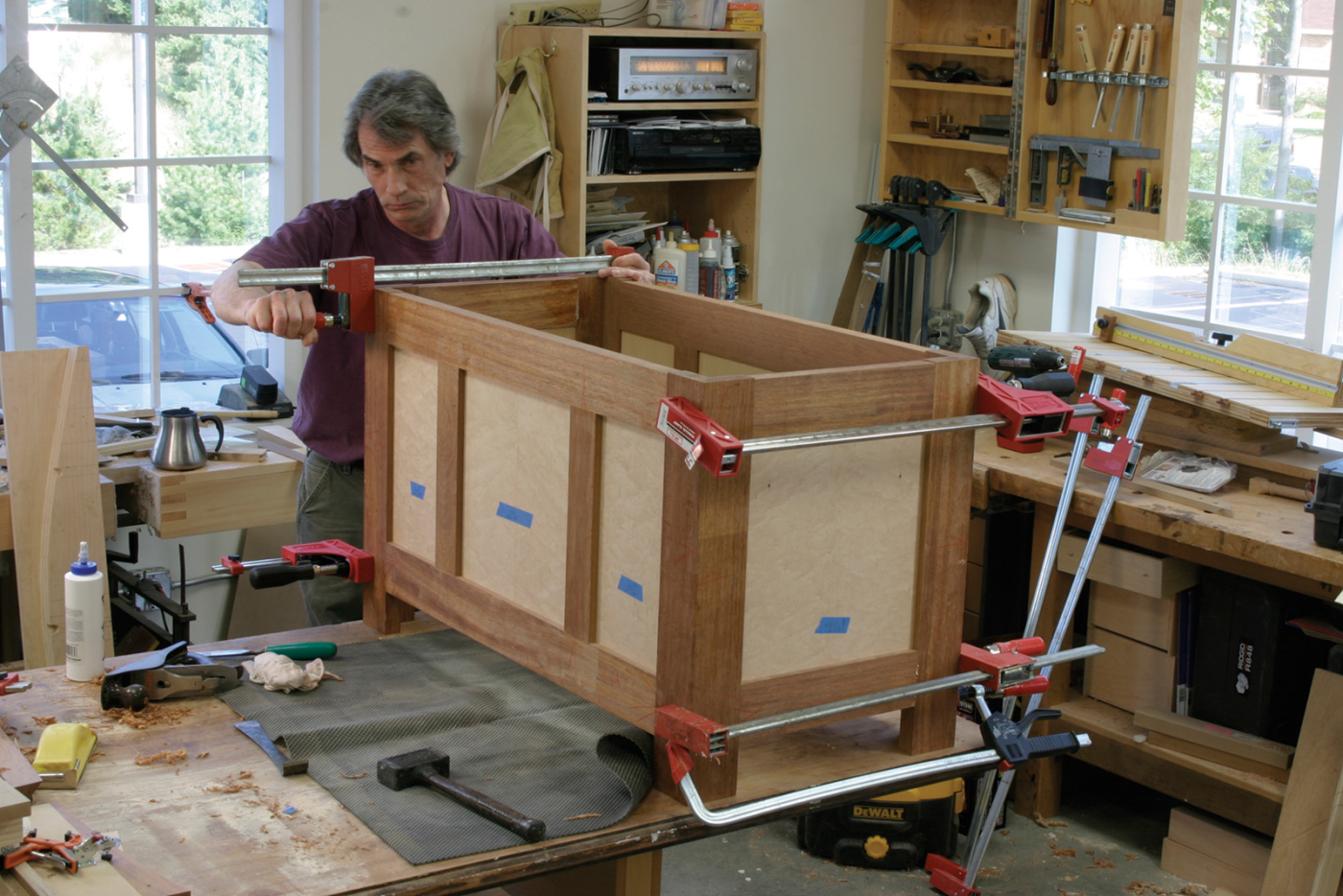
The assembled chest is flipped upright, the corners are checked for sq. and the case is clamped.
After the glue on the strong elements had dried, I sanded the skin of the chest with a random-orbit sander, working from #100 grit as much as #220, adopted by a hand sanding with #280 grit. The highest panel was then put collectively and sanded easy.
Including the Corbels
I made the 3⁄8“-thick corbels by resawing among the 1-1⁄4“-thick inventory left over from making the remainder of the chest. After planing them to thickness, I stacked 4 items along with double-faced carpet tape holding the layers collectively. I made a sample of the corbel form from 1⁄2” MDF, and traced the define on the highest layer of the stack.
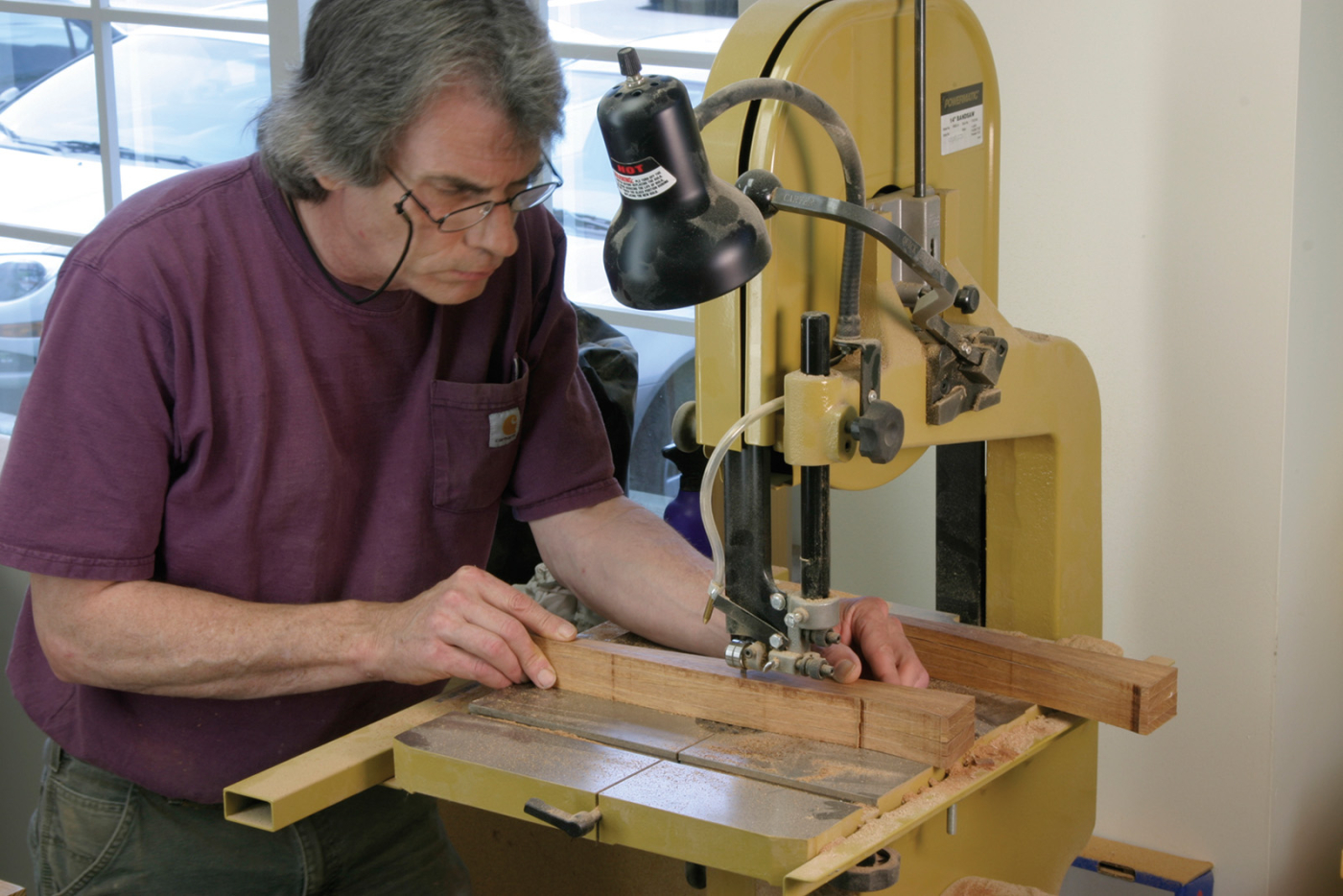
A stack of 4 blanks held along with double-sided tape yields eight matching corbels.
Utilizing inventory a number of inches longer than I wanted, and interlocking the patterns, I used to be in a position to get eight corbels from every stack. I reduce the items on the band noticed, and sanded the curved edges on the spindle sander earlier than taking the stacks aside. With a 1⁄8“-radius roundover bit in my laminate trimmer, I eased the curved edges earlier than sanding the corbels.
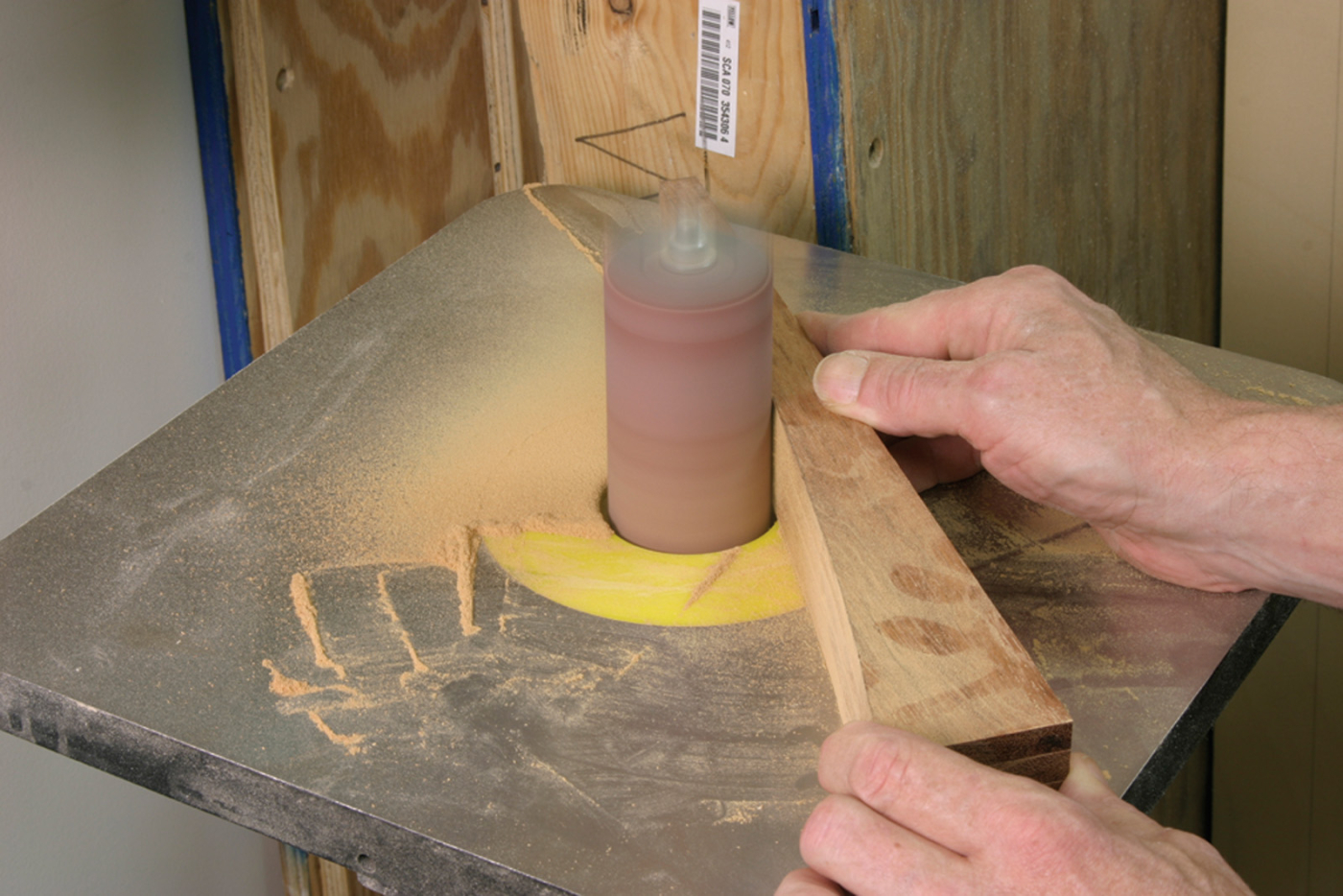
After chopping, the perimeters are sanded with the stack nonetheless caught collectively.
The corbels are glued to the panels and edges of the stiles. I used a pair 3⁄4“-long 23-gauge headless pins to lock the broader a part of the corbels to the panels, filling the nail holes with some sawdust and cyanoacrylate glue. I hand sanded your complete cupboard, and utilized three coats of Waterlox wiping varnish earlier than hinging the lid and placing within the tongue-and-groove backside.

The distinction in thickness between the corbel and the adjoining stile and rail provides visible curiosity.
I used 4 2-1⁄2“-long, no-mortise hinges for the lid, spacing them evenly alongside the highest rail of the again of the chest. To carry the lid within the open place, I used a pair of toy-box helps. As a result of the chest was nonetheless bottomless, I might lay it on its again on my bench, and attain inside to place the helps.
Attending to the Backside
I don’t have a daughter, so this chest will stay on the foot of our mattress, holding further blankets. I positioned 3⁄4” by 3⁄4” cleats across the perimeter of the underside, flush with the underside fringe of the rails.
The underside planks are 3⁄4“-thick fragrant cedar, held along with easy tongue-and-groove joints. I nailed the underside planks to the cleats on the edges and ends. The cedar is left unfinished.
In the long run, this chest has a clear, up to date look with basic proportions. Altering the fabric might have disguised its origin, however the power of the design shines by means of. Good design, in spite of everything, is timeless.
Product Suggestions
Listed below are some provides and instruments we discover important in our on a regular basis work across the store. We might obtain a fee from gross sales referred by our hyperlinks; nonetheless, we’ve fastidiously chosen these merchandise for his or her usefulness and high quality.






